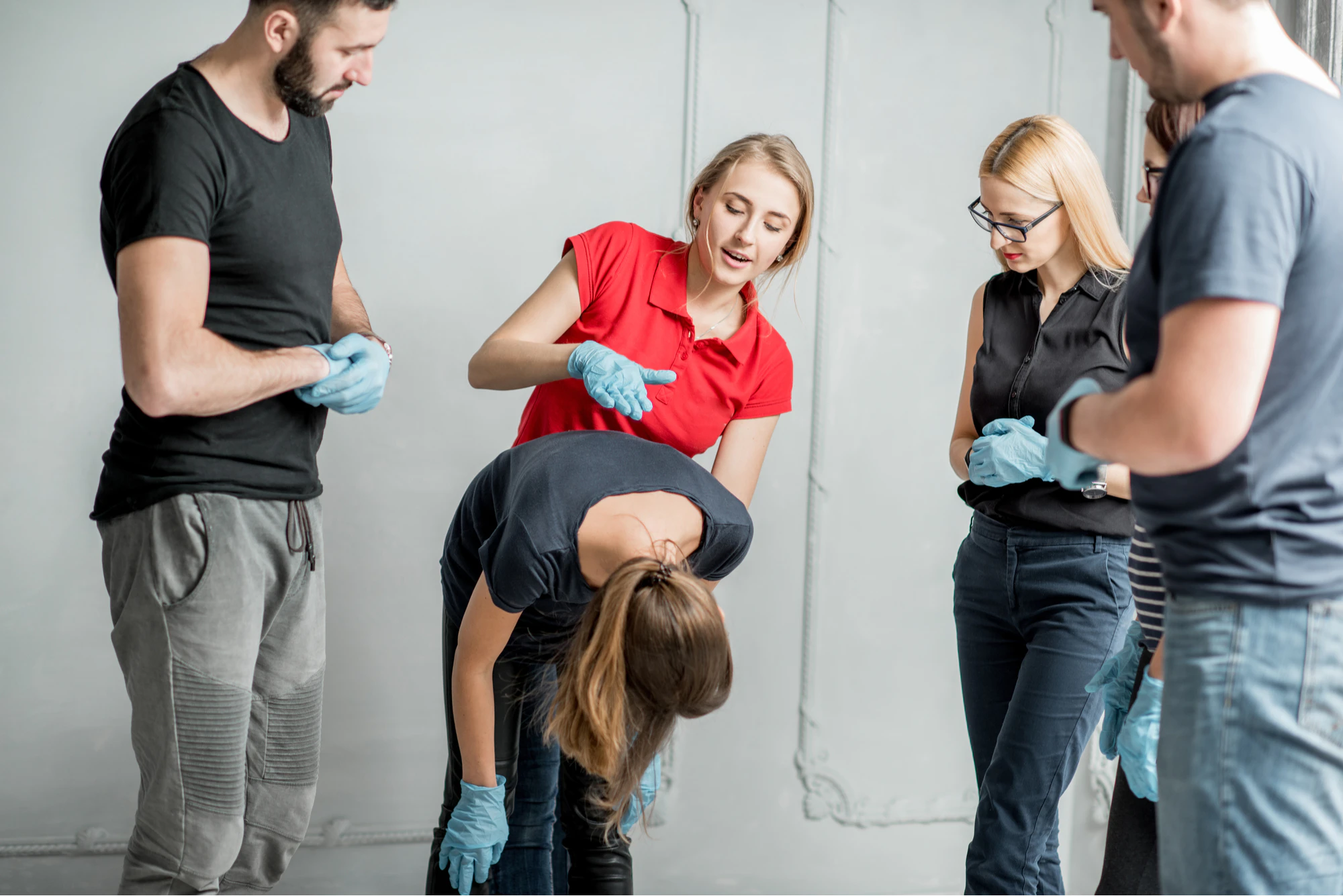Choking incidents can happen when you least expect them, and knowing how to provide choking first aid can make all the difference in saving a life. Whether you’re at home, in a restaurant, or anywhere else, being prepared with the right knowledge can be a true lifesaver.
In this blog post, we’ll share six quick response tips for choking first aid that are easy to remember and can help you act swiftly in a moment of crisis.
1: Recognize the Signs of Choking
The first step in effective choking first aid is to recognise when someone is choking. Common signs include:
- Coughing or gagging: If the person is coughing forcefully, it’s a sign that their airway is partially blocked.
- Inability to speak: If they are unable to make any sounds or speak, it’s a clear indicator of a severe blockage.
- Panicked gestures: The person may clutch their throat or chest, signalling distress.
2: Encourage Coughing
If you notice someone showing signs of choking, encourage them to cough. Coughing is the body’s natural way of clearing a blockage from the airway. It’s essential to stay calm and reassuring in this situation. Remind them to keep coughing until the object is expelled.
3: Perform the Heimlich Manoeuvre
If the person is unable to cough or their condition worsens, it’s time to perform the Heimlich manoeuvre, a key skill in choking first aid. Here’s how you can do it:
- Stand behind the choking person and wrap your arms around their waist.
- Make a fist with one hand and place it just above the navel, thumb-side in.
- Grab your fist with your other hand and give quick, upward thrusts to the abdomen.
Repeat these thrusts until the object is expelled and the person can breathe again. It’s essential to apply force in an upward motion to help dislodge the obstruction.

4: Call for Professional Help
Even if the Heimlich manoeuvre is successful, it’s crucial to call 911 or your local emergency number immediately. Choking incidents can have serious consequences, and professional medical attention is essential to ensure there are no underlying issues or complications.
5: Be Prepared with Choking First Aid Training
The best way to handle choking first aid situations is to be prepared in advance. Consider taking a first-aid and CPR course to learn proper techniques for responding to choking incidents and other emergencies. These courses provide hands-on training and valuable knowledge that can empower you to take swift and effective action.
6: Create a Safe Environment
Prevention is key when it comes to choking first aid. Take steps to create a safe environment, especially for young children who are more prone to choking incidents. Here are some tips:
- Cut food into small, manageable pieces: This reduces the risk of food becoming a choking hazard.
- Supervise mealtime: Keep a close eye on children while they’re eating to ensure they don’t put too much food in their mouths at once.
- Keep small objects out of reach: Be mindful of small toys, coins, and other objects that could be potential choking hazards.
Conclusion
By following these tips for choking first aid, you can be better prepared to handle a choking emergency effectively. Remember, staying calm, recognising the signs, and taking immediate action can make all the difference in saving a life.
Don’t wait until it’s too late – equip yourself with the knowledge and skills needed to respond confidently in critical situations. Your actions could be the difference between life and death.

